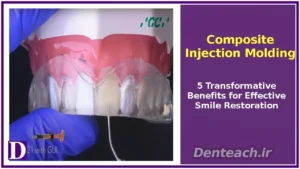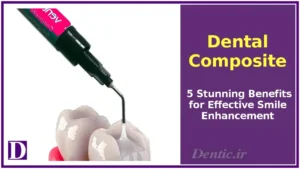
Table of Contents


Composite Injection Molding: 5 Transformative Benefits for Effective Smile Restoration

Dental Composite: 5 Stunning Benefits for Effective Smile Enhancement

Teeth Bleaching: 5 Radiant Benefits for Effective Smile Brightening

Dental Veneer: 5 Stunning Benefits for Effective Smile Enhancement

Implant-Supported Fixed Prostheses: 5 Advanced Benefits for Effective Smile Restoration

Dental Braces: Transforming Smiles with Precision Orthodontics
Dental braces are orthodontic devices designed to straighten teeth, correct bite issues, and enhance oral health, delivering confident, functional smiles. Comprising brackets, archwires, bands, and sometimes elastics, braces apply controlled forces to gradually reposition teeth and jaws. With over 4 million people in the U.S. wearing braces annually, according to the American Association of Orthodontists (AAO), they remain a cornerstone of orthodontic care. This article explores the definition, types, components, treatment process, aftercare, benefits, challenges, and future trends of dental braces, highlighting their role in aesthetic and restorative dentistry.
Defining Dental Braces
Dental braces are orthodontic appliances used to correct malocclusions—misaligned teeth or jaws—that impact aesthetics, function, or oral health. Affecting approximately 70% of the population to varying degrees, malocclusions can lead to difficulties in chewing, speaking, or cleaning teeth, increasing risks of decay or gum disease. Braces work by applying continuous pressure to shift teeth into optimal positions over time, typically 1–3 years. Available in various forms, from traditional metal to discreet clear aligners, braces offer personalized solutions for children, teens, and adults, combining biomechanical precision with aesthetic considerations to achieve lasting results.
Components of Dental Braces
Braces consist of several key components:
- Brackets: Small, square attachments bonded to the front (or back for lingual braces) of each tooth, typically made of metal, ceramic, or composite materials. They anchor the archwire.
- Archwires: Thin metal wires threaded through brackets, applying pressure to guide tooth movement. Modern archwires use nickel-titanium for flexibility and heat-activated properties.
- Bands: Metal rings cemented around molars to secure the archwire, providing a stable anchor.
- Elastics (Rubber Bands): Small elastic bands that apply additional force to correct bite issues, such as overbites or underbites, by connecting upper and lower teeth.

Types of Dental Braces
Braces come in various forms to suit different needs and preferences:
- Traditional Metal Braces: Stainless steel brackets and wires, highly effective for complex malocclusions. They are durable, cost-effective, and suitable for all ages.
- Ceramic Braces: Tooth-colored or clear ceramic brackets blend with natural teeth, offering a less noticeable option. They function like metal braces but may stain if not maintained.
- Lingual Braces: Placed on the back (lingual) side of teeth, these are nearly invisible from the front, ideal for patients prioritizing aesthetics. They require specialized expertise and may affect speech initially.
- Invisible Aligners: Clear, removable aligners (e.g., Invisalign®) made from custom-molded plastic, suitable for mild to moderate cases. Worn 20–22 hours daily, they offer discretion and convenience.
Indications for Dental Braces
Braces are recommended for various conditions:
- Crooked or Misaligned Teeth: Crowded, spaced, or uneven teeth impacting aesthetics or hygiene.
- Bite Issues: Overbites, underbites, crossbites, or open bites causing chewing difficulties or jaw strain.
- Jaw Misalignment: Asymmetrical jaws affecting facial balance or comfort.
- Oral Health Risks: Misalignment increasing susceptibility to cavities, gum disease, or tooth wear due to cleaning challenges.
- Speech or Chewing Issues: Misaligned teeth affecting pronunciation or mastication efficiency.
The Orthodontic Treatment Process
The braces journey is a structured process:
- Consultation: The orthodontist assesses dental and facial structures using X-rays, intraoral scans, and bite analysis. Treatment goals are discussed, and the best brace type is selected.
- Placement: Brackets are bonded to teeth using dental adhesive, bands are cemented on molars, and archwires are threaded. The process takes 1–2 hours and is painless with local anesthesia if needed.
- Adjustments: Regular visits (every 4–8 weeks) involve tightening or replacing archwires, adding elastics, or making modifications to guide tooth movement.
- Periodic Assessments: Progress is monitored through clinical exams and imaging to ensure alignment goals are met.
- Retention: After braces removal, retainers (fixed or removable) are prescribed to maintain alignment, typically worn full-time initially and then nightly.
Treatment duration varies from 6 months to 3 years, depending on case complexity.
Aftercare and Maintenance
Maintaining braces and oral health requires diligence:
- Oral Hygiene: Use a soft-bristled toothbrush, floss threaders, or interdental brushes to clean around brackets and wires, preventing plaque buildup.
- Dietary Restrictions: Avoid hard, sticky, or chewy foods (e.g., popcorn, gum, caramels) to prevent damage to braces.
- Regular Check-Ups: Visit the orthodontist every 4–8 weeks for adjustments and the dentist every 6 months for cleanings.
- Protect Appliances: Use a mouthguard for sports to safeguard braces and teeth.
- Retainer Compliance: Wear retainers as prescribed post-treatment to prevent relapse, which occurs in 20–50% of cases without retention.
Benefits of Dental Braces
Braces offer significant advantages:
- Straighter Teeth: Enhance smile aesthetics, boosting confidence and social interactions.
- Bite Correction: Improve chewing, speech, and jaw function, reducing temporomandibular joint (TMJ) issues.
- Oral Health Improvement: Aligned teeth are easier to clean, lowering risks of cavities and gum disease by up to 40%.
- Durability: Results can last a lifetime with proper retention.
- Versatility: Suitable for a wide range of malocclusions, from mild to severe.
Challenges and Considerations
Challenges include:
- Cost: Treatment costs $3,000–$7,000 in the U.S., though insurance or financing can offset expenses.
- Discomfort: Temporary soreness after adjustments, manageable with over-the-counter pain relievers.
- Aesthetics: Metal braces may affect appearance, though ceramic or lingual options address this.
- Compliance: Success requires adherence to hygiene, diet, and appointment schedules.
- Treatment Duration: Complex cases may take years, requiring patient commitment.
Future Trends
Orthodontics is advancing with technology:
- Digital Orthodontics: 3D imaging and AI-driven planning (e.g., Invisalign’s ClinCheck®) enhance precision.
- Smart Materials: Heat-activated nickel-titanium archwires reduce discomfort and treatment time.
- Accelerated Orthodontics: Techniques like micro-osteoperforation shorten treatment by 20–40%.
- 3D Printing: Enables rapid production of custom brackets and aligners.
Conclusion
Dental braces are a proven, effective method for achieving straighter, healthier smiles by correcting misaligned teeth and bite issues. With options like metal, ceramic, lingual braces, or clear aligners, patients can choose treatments tailored to their needs and lifestyle. Proper aftercare and emerging technologies ensure lasting results and improved patient experiences. Consult a certified orthodontist or visit American Association of Orthodontists to explore personalized brace options.
- American Association of Orthodontists. (2025). What is Orthodontics?
- American Dental Association. (2025). Orthodontics.
- Proffit, W. R., et al. (2018). Contemporary Orthodontics. American Journal of Orthodontics and Dentofacial Orthopedics, 154(2), 165–172.
- American Association of Orthodontists. (2025). Orthodontic Treatment Options.
